We clean suede at home: effective ways
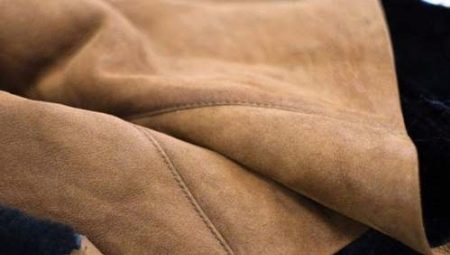
The popularity of suede - velvety leather with a characteristic fine pile, which is tanned with fatty substances, is due to its excellent decorative qualities. Designers of clothes, shoes, bags and accessories from year to year prefer this soft, elastic, waterproof material, creating amazingly beautiful and stylish things.
But when replenishing your wardrobe with a suede product, you need to be ready for regular, and most importantly, delicate care, since only under this condition can you preserve the attractiveness of suede, no matter whether it is natural or artificial. We will find out which cleaning methods are the most effective, and how to keep things made of suede of different colors clean.
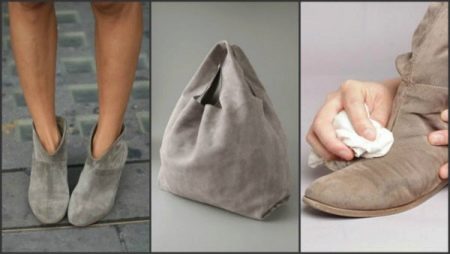
What kind of pollution are there?
Although suede has good performance characteristics, it is susceptible to all kinds of dirt. The choice of this or that processing method determines the nature and origin of the stains.
In the case of suede, most of the problems are caused by:
- Blocked areas are unavoidable due to prolonged use of clothing, shoes or accessories.
- Greasy stains. The main reasons for their formation are the interaction of things with the skin in the process of wearing and the banal carelessness of the owners.
- Whitish stains. The main provocateur of the appearance of such spots is dampness. If measures are not taken in time, mold can spread, and the fight against which is rarely successful.
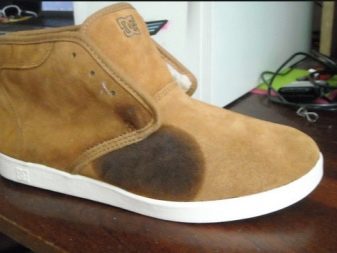
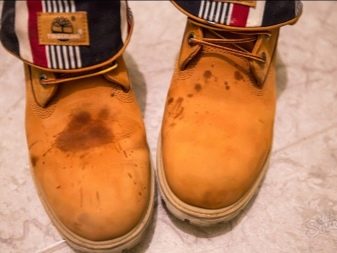
- Salt streaks are the result of walking in the rain or sleet.
- Yellow from sweat or white streaks from lined deodorants, which are also common.
- Protein contamination that remains if milk, eggs, blood and other substances with a similar composition get on the suede. The reason is the careless attitude of the owners. Spots of this kind are considered the most difficult, therefore it is important to get rid of them as quickly as possible before the formation of a characteristic crust.
- Oil stains from paints and varnishes, glue or ink from a pen, to remove which you have to not only clean, but also degrease the problem area.
- Dust pollution - small suede fibers contribute to the accumulation of dust, as a result of which things take on an ugly grayish tint.
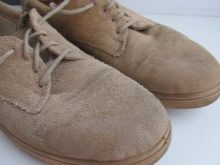
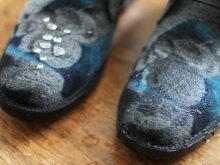
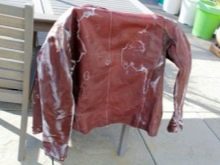
How to wash?
When choosing a cleaning method, you must also take into account what type of suede you have to deal with: with a natural material or an artificial analogue. The original is easily recognizable by its sinuous grooves, multidirectional pile and variable color. Its artificial counterpart is characterized by a uniform hairiness of the surface with a certain direction of the villi.
Natural suede, due to its increased strength, has a rather long service life, but contact with water is undesirable for it. When interacting with a liquid, the material, due to its fluffiness, begins to actively absorb moisture, swelling and becoming solid. For this reason maintenance of natural suede products is mainly reduced to dry methods of cleaning from dirt. Whereas artificial canvas calmly refers to moisture. What is contraindicated for him is friction, which provokes deformation of the villi.

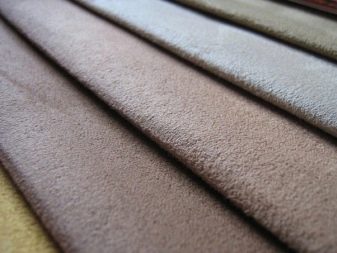
Professional care
Preserving the unique texture of suede and keeping it in good condition requires certain tools and skills. Today's variety of effective products for the care of this material allows you to easily select protective agents for products of any type and color. Regular use of professional cosmetics for the care of suede shoes and clothing minimizes the negative impact of external factors and prolongs the life of the things you love.
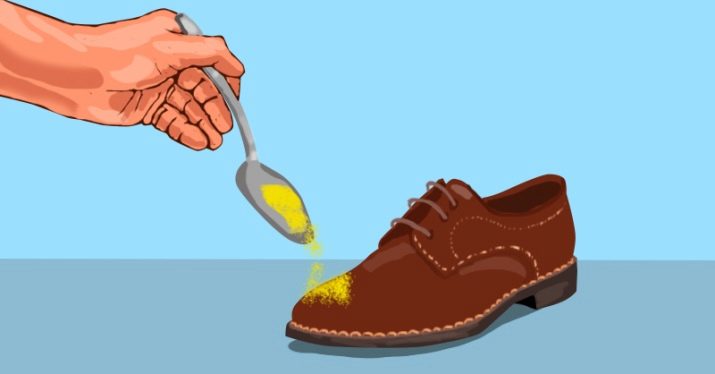
What should be in the home care arsenal:
- Water-repellent impregnation with silicone, thanks to which pile leather will be able to withstand the harmful effects of moisture and will not be afraid of dirt or dust.
- Foam shampoo, which works well against salt stains, instantly removes dirt and promotes a deepening of color.
- Spray paint that prevents color fading and repairs rough spots on suede.
- Sponges-brushes for removing dry dirt, restoring velvety material, cleaning welts and seams.
- To remove stubborn stains, it is most convenient to use hard sponges that suck in dirt or loose erasers that remain in the stains, which are then removed with a brush.
- Erasers for restoring shiny areas and hairiness.
- Several special brushes to gently remove dirt and restore worn, smoothed pile. The most convenient in this regard is the combined option - a "2 in 1" brush, where one side is a rubberized comb, and the other is a rubber surface with short bristles.
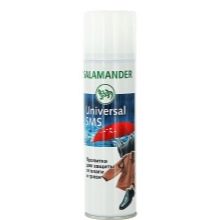
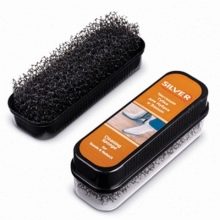

The safest method of processing suede is considered to be the sequential brushing over the contaminated surface.
The advantage of mechanical dry cleaning - delicate and at the same time deep cleaning of the pile in the most inaccessible areas between the villi. The bristles combs them efficiently, removing dried dirt, dust, fat deposits. The brush restores the original fluffiness to the pile leather, due to which things from it look like new.
Alternative care
To clean suede products, you can use folk methods:
- With ammonia (5 ml) and soda (60 g). The ingredients are mixed, and then the resulting composition is applied to the problem area. Wait 10-15 minutes and remove the mixture with a damp cloth.
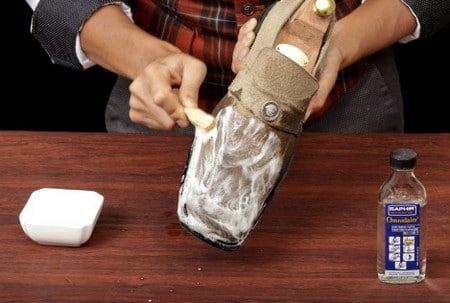
- With the help of talc, chalk or starch with adsorbent properties, it is easy to get rid of greasy stains. Any composition is simply sprinkled on the glazed areas, kept for an hour, and then the powder is cleaned off with a brush.
- High-purity gasoline will help to remove the greasy stain. The napkin is impregnated with fuel, lightly wipe the dirt and leave for 40-50 minutes.
- Lemon juice copes well with stains and smudges from road salt. To prepare a cleaning solution, water (200 ml) is mixed with the juice of one fruit and the product is wiped. In this case, rinsing is dispensed with. They let things dry naturally, and then "comb them".
- If you are having difficulty removing old stubborn stains, then you should try the recipe: skim milk (100 ml) + ammonia and soda in equal proportions. The resulting composition is used to treat the contaminated surface, having previously tested it in a small area on the inside of the product.
- Peroxide (5 ml) with ammonia (5 ml) can remove stains of various origins, without worrying about the loss of color brightness of things. A mixture of these components has a gentle effect and prevents damage to delicate suede.
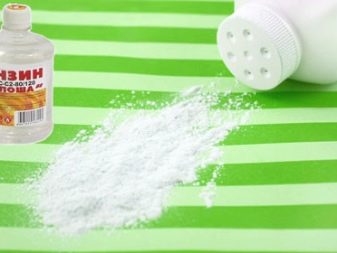
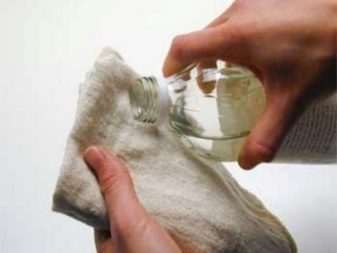
How can you quickly clean?
Washing is permissible only for high-quality suede products. The use of a washing machine is taboo, washing delicate materials is allowed only by hand.
How to wash natural suede?
General recommendations:
- Soaking is contraindicated in natural suede for the reasons indicated earlier. To wash it off, the product is processed by weight, that is, on a hanger or placed on a flat base.
- A prerequisite is compliance with the temperature regime up to 30 ° C, otherwise the material will harden.
- Suitable detergents are gentle, gel-like formulations.
- To remove greasy stains from the collars and sleeves, use ammonia with soda or peroxide, and gasoline will help to clean complex dirt.
- Spinning and twisting the material is prohibited.
- It is advisable to rinse the product with conditioner, having previously greased it with glycerin (2.5 ml) and water (1 liter).
- Do not dry in direct sunlight or near radiators. The products are dried in natural conditions by spreading them out on a flat surface and rolling them up in a roll.
- The dried thing is combed with a special brush.
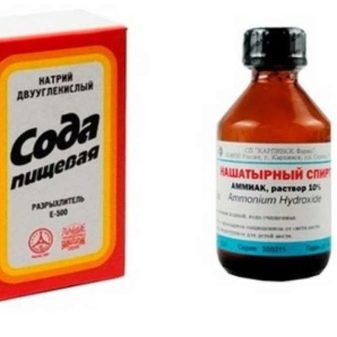

How to bring back the purity of faux suede?
The best option is to wash with a delicate gel and a brush. You need to add it to warm water and beat a rich foam. Then process the product by weight, rinse and wrap with a towel. Dry unfolded. To clean velvety pile leather items at home, do not neglect the possibilities of improvised means.
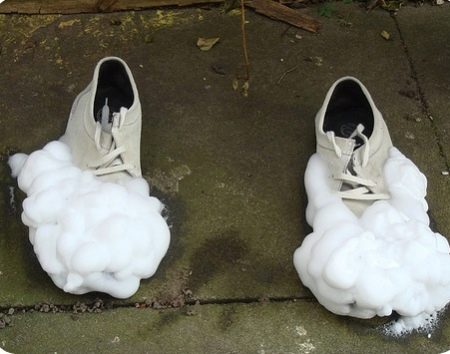
A few more alternative cleaning methods:
- Cleaning up the coffee grounds can help restore cleanliness to things made from brown or black suede. You need to brew a fragrant drink. The thick remaining on the bottom of the Turks can be washed off the oil and remove other complex contaminants. The main thing is to let this substance dry completely, and then brush it off.
- You can remove dried stains with ammonia. A working solution is prepared: water (1 l) + 3-4 drops of alcohol. A cotton pad is moistened in it and stains are treated.
- Salt helps with stains well. It is applied in a small amount to the place of pollution and gently rubbed in with gentle movements, after which it is brushed off.
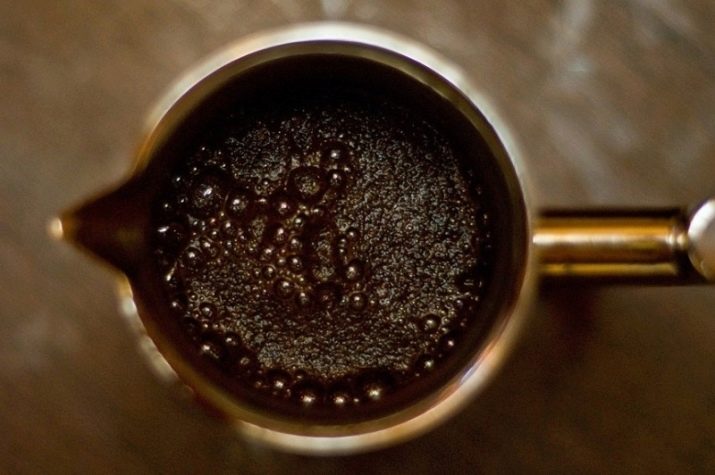
Furniture upholstery
To keep the suede sofa clean, use a rubber brush to prevent damage to the upholstery. You can entrust the removal of greasy stains with an eraser and alcohol solution. To protect expensive suede furniture, you will need to treat its surface with a dirt-repellent impregnation immediately after purchase.
The presence of a vacuum cleaner with the function of a steam generator or a household steamer greatly facilitates the task of cleaning a sofa or chair with a capricious suede lining.
Procedure:
- Diagnose contamination and select household chemicals.
- Vacuum clean to remove coarse dirt.
- Treat the surface with a cleaning agent, creating a pressure of 3 atm. for knocking out dirt.
- Carry out cleaning using two modes: with a stream of detergent followed by the suction of impurities by the device.
- Remove local contamination.
- Dry the treated surface in any way: draw out moisture with a steam generator or blow it off with air.
- Rinse upholstery with clean water under high pressure.

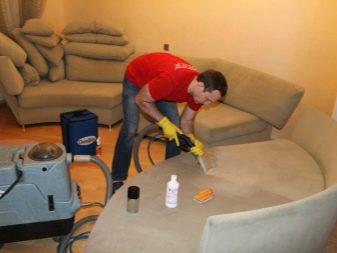
Hot steam cleaning benefits:
- High-quality removal of deeply ingrained dirt and unpleasant odors without waterlogging the sofa surface.
- Restoration of the brightness of the color of the upholstery and renewal of furniture.
- Disinfection: destruction of colonies of domestic parasites, fungi and mold.
At the end of the steam treatment, it is important to ensure that the upholstered furniture is completely dry in natural conditions.
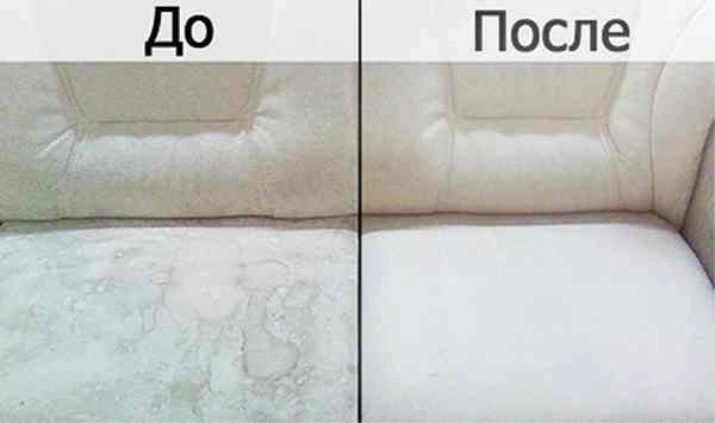
Clothes and shoes
Due to greasy marks, a fashionable suede jacket, a luxurious raincoat or a designer dress made of piled leather ceases to look attractive. You can solve a similar problem with:
- Steam treatment. Hot steam not only effectively removes greasy stains, but also copes five times with scuffs, folds and creases. In addition to a special steamer, you can use a regular iron.
- Eraser - if you don't have a professional one, a simple stationery eraser will do, which easily reaches greasy spots in hard-to-reach places. To achieve the best cleansing effect, the material is slightly steamed.
- Vinegar. 9% vinegar essence (15 ml) is added to water (1 l). With a cotton pad moistened with the resulting solution, gently wipe problem areas. The remaining composition is filled with a sprayer and sprayed over the surface to restore the softness of the skirt or dress.
- The collars, sleeves and places on the elbows are sprinkled with a mixture of starch + talcum powder, held for an hour and removed with a brush.
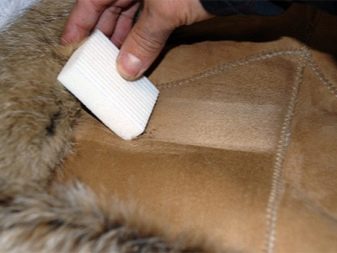
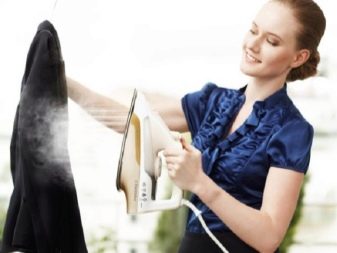
Stains on suede hats and gloves are just as troublesome.
How to restore the look of your favorite accessories:
- Prepare a mixture: milk (200 ml) + soda (20 g). Wipe the dirt with a moistened cotton pad until they completely disappear. After that, a solution is prepared: water (1 l) + vinegar (5 ml) and all areas on a hat or beret are treated. Wipe with a thick napkin and hang to dry.
- Orange peels, which are simply rubbed over a hat or lemon juice, will help to update a dark suede hat.
- To clean the gloves, use wool products. For convenience, gloves are processed directly on the hands, wrung out with a towel and placed in a horizontal position to dry.
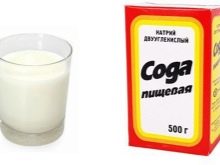
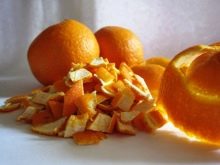
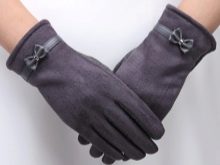
To avoid losing the appearance of suede shoes, it is important to remove dirt as soon as possible, that is, upon returning from the street.
Care rules:
- Immediately put boots or ugg boots to dry, placing crumpled newspapers inside.
- Do not place shoes near open heat sources, as they are deformed.
- Dirt, dust, salt stains are removed only when the boots are completely dry.
- Black suede is well cleaned by dried rye bread; a carbon copy is used to give a uniform color.
- To restore softness and fluffiness, steam treatment is carried out at the end.
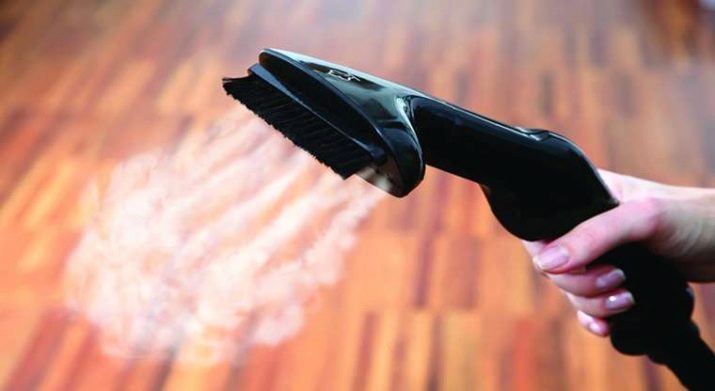
Features of cleaning light material
Things made from light suede certainly look chic. True fashionistas are little confused by their absolute impracticality and difficulties with cleaning.
Here are some methods to help keep your white suede clothing clean:
- Soda (7 g) + milk powder (100 g). The mixture is applied to the contaminated area and rubbed gently until the dirt disappears. The rest of the powder is removed with a vacuum cleaner, and then wipe the treated surface with a damp cloth.
- Peroxide + water.Moisten a soft tissue with a solution and rub the problem area.
- Milk + soda + peroxide. Proceed as in the previous case.
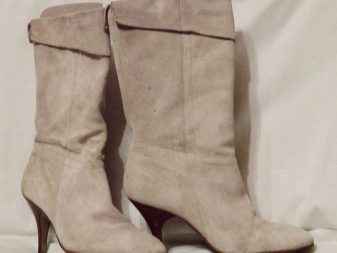

Clothes made of natural gray suede are cleaned with a soapy solution of grated laundry soap (30 mg of shavings per 200 ml of water). With a stiff brush, the composition is rubbed into the stain until foam appears, and then wipe the product with a sponge.
Colored suede clothing is cleaned with ammonia. It is diluted in water 1: 5, stirred thoroughly, and then the stains are treated with a moistened brush. Wipe the material with a damp cloth and dry.
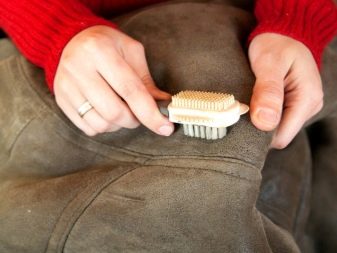
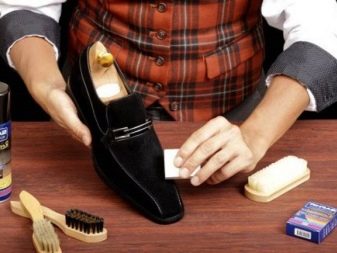
Care advice
Timely and systematic care prolongs the service life of suede items, as well as the careful attitude of the owners.
A few good tips in the end:
- Iron suede things from the inside out, setting the minimum temperature. Natural suede is ironed exclusively through dry gauze.
- The use of aggressive chlorine stain removers is prohibited.
- New items are vacuumed using a bristle nozzle to remove warehouse and shop dust that gets stuck in the fluff during storage and transport. After that, they are treated with appropriate means.
- When the season is over, the products are taken out into the open air to dry thoroughly before storage. The outerwear is turned inside out, thus limiting the access of the sun.
- Optimal storage conditions: dark rooms where things are placed in sealed covers or vacuum bags.
- From time to time, give your things to dry cleaning: professional processing will definitely not be superfluous.
- Only experienced craftsmen should be engaged in the repair and dyeing of suede items.
Next, we recommend watching a video that shows simple ways to clean suede.








